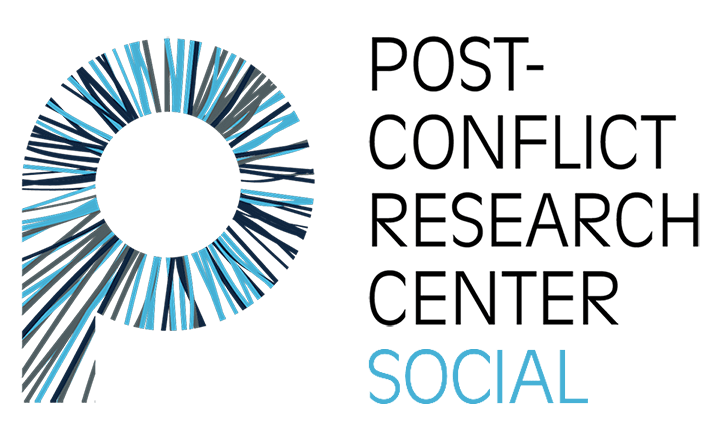
Gender-based violence is sending shockwaves through Bosnia and Herzegovina, and its frequent outcome is fatal: femicide.
Femicide remains legally undefined in the country. Despite the outspokenness of NGOs and human rights activists, fear of the next femicide is ever-present in Bosnian-Herzegovinian society.
The appalling murder of Nizama Hećimović in the northern city of Gradačac, which was live-streamed on social media, horrified the public. Shortly thereafter, this incident was followed by femicides in Živinice (Tuzla Canton) and Zavidovići (Zenica-Doboj Canton), then a severe assault in Bijeljina (NE Bosnia), beatings in Ljubuški (SW Bosnia), and another femicide in Sarajevo. Femicide and domestic violence against women and gender minorities were certainly occuring before, but since Nizama’s murder, these crimes have received greater visibility in the media.
According to the data of the High Judicial and Prosecutorial Council (HJSC), 518 suspended sentences were imposed for domestic violence charges in 2021, 494 in 2022, and 410 in 2023. In 2021, 118 people were sentenced to prison for such crimes, a number which rose to 139 in 2022 and 151 in 2023.
Identifying Perpetrators
Dr. Safet Mušić, a researcher specializing in violence-related phenomena, cited numerous studies indicating that people can become violent as a result of their upbringing, environmental influences, education, and other factors integral to personality formation.
Dr. Mušić enumerated some of the common characteristics of individuals prone to violence, including unjustified outbursts of aggression, an inability to engage in rational discussions and non-violent problem-solving, incidents of aggression in school and during childhood, attempts at dominance in romantic relationships with the threat of physical force, substance abuse, alcoholism, possession of illegal weapons, social conflict, and affiliation with extremist and violent groups, among others.
Aside from femicide, the category of gender-based violence includes other acts of physical violence which can leave various visible traces (welts, bruises, contusions, bloody lips, black eyes, strangulation marks on the neck, etc.), as well as coercion, threats, intimidation, isolation, and emotional, psychological, sexual, and economic abuse.
Identifying perpetrators in society is often difficult, as they frequently use various methods to undermine the victim’s self-confidence and pride. In conversations with victims, fear can be perceived in facial expressions, avoidance of eye contact, secretive or withdrawn behavior, and a general lack of self-confidence.
To protect victims of violence, Mušić points to well-established options for seeking help – filing police reports, maintaining these reports, and testifying against the perpetrator. Additionally, it is possible for the Social Welfare Center to intervene in collaboration with the authorities to provide support to victims.

One issue that commonly arises is that victims are often unemployed, and after relocating to safe houses, they find themselves without secure shelter again after six months, as well as without financial means. Mušić considers this an area where more work is needed to overcome the problem.
As a support for victims of violence, Mušić suggested that one option might be providing continuous financial assistance through the Social Welfare Center until the victim secures employment.
“Violence can be prevented from having fatal consequences primarily through a swift response from the executive authorities: the police, prosecution, and court,” Mušić stated, emphasizing that strict adherence to the legal framework in cases of violence is crucial. Prevention is also extremely important, including measures to introduce the subject into formal education or existing courses.
Support and Prevention
According to Dr. Mušić, non-governmental organizations play a significant role in implementing awareness programs within the community, targeting both young people and offenders. Additionally, projects should be carried out through various social activities such as seminars, summer camps, and quizzes, supported by all levels of government.
Amina Kolašinac is the coordinator of the project “Violence is not Love”, conducted by the Global Analytics Association for Social Research. She says that through projects, public campaigns, youth education, street initiatives, and the media, the project aims to raise awareness that violence against women and gender minorities should not be normalized. Victims should be provided with support and preventive measures for recognizing violence in relationships and reacting to it in a timely manner.
“Educating people, primarily young people, has enabled their direct contribution to the topic and our public campaign has sent a message to women that they are not alone or abandoned,” explained Kolašinac, adding that the project also raises awareness among men about the importance of their role in women’s lives.
In addition to family settings, gender-based violence also occurs in the workplace. One well-known example is the physical assault on Enisa Klepo by the manager of the hotel in Jablanica where she worked. The attack had resulted from her efforts to exercise her labor rights.
_______________
This article was initially published within the second edition of MIR Magazine (May 2024). MIR, which means ‘peace’ in Bosnian is an annual publication and platform for young inventive people developed by the Post-Conflict Research Center and Balkan Diskurs.






